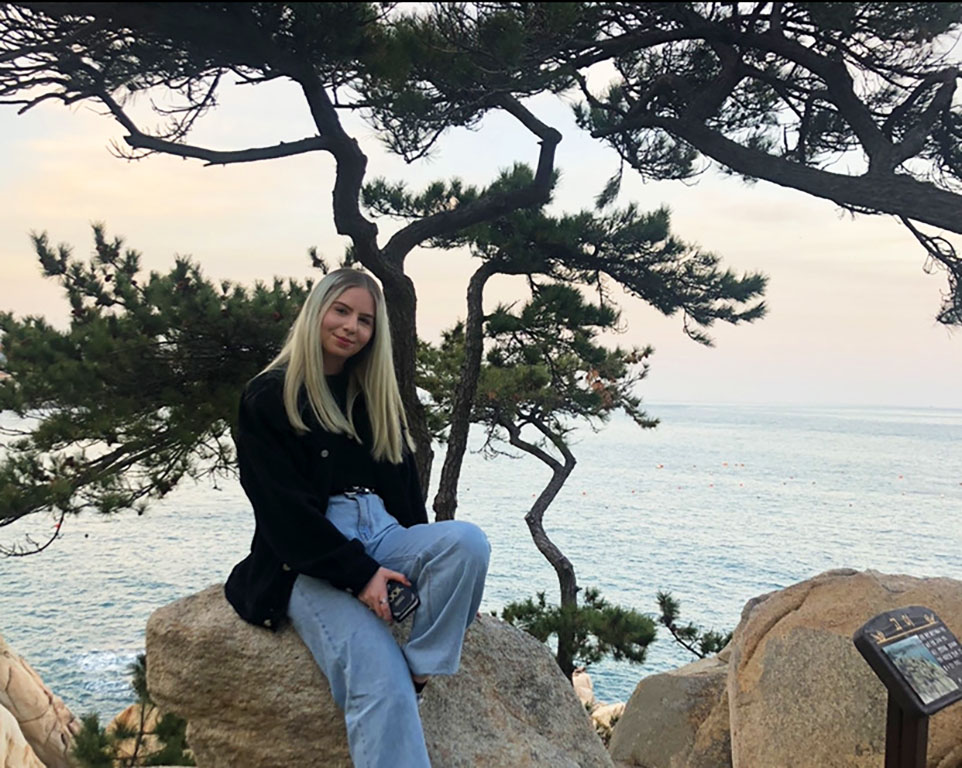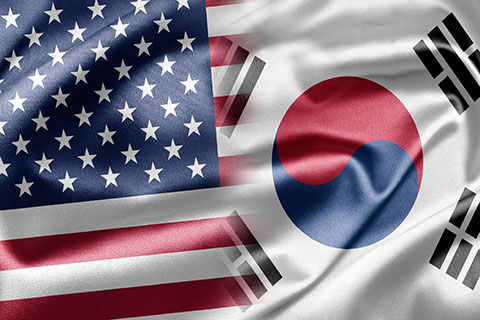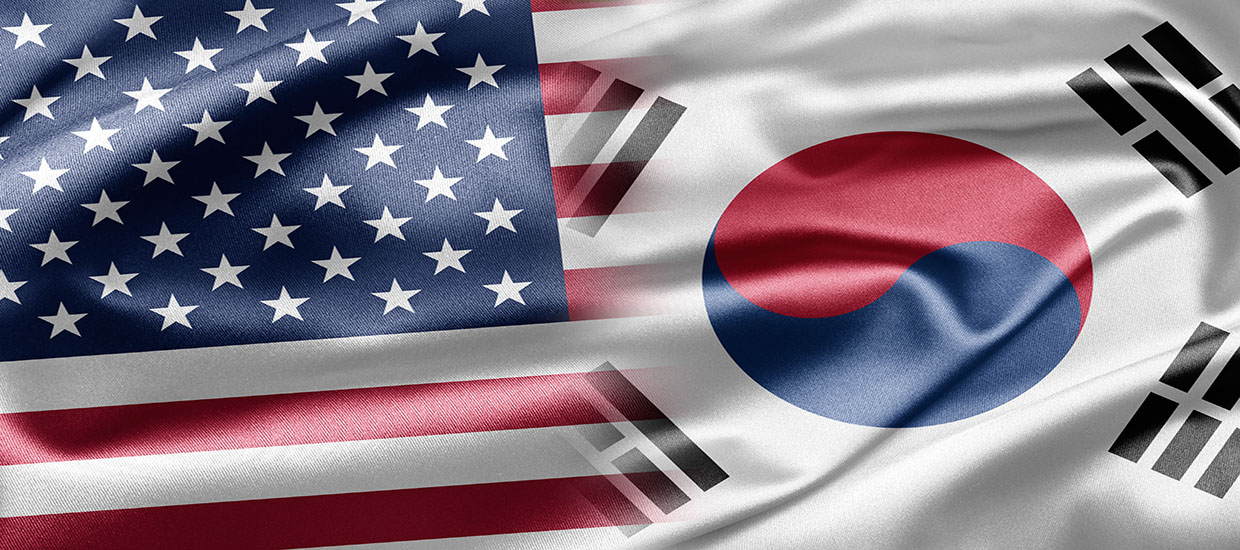By Rachel Waldman
Considering the progression of COVID-19, the detection of under 50 new cases might come as a source of relief to many countries that are currently experiencing upwards of thousands of new cases a day. However, on February 19th, the discovery of only 27 new cases nationwide prompted fear and an immediate response in the southeastern city of Daegu in South Korea. Within a few days, Daegu transformed from a busy city of 2.5 million people into a ghost town, all in response to the concern created by these new cases. Social media documented images of empty streets that were packed with people only days before, and the public began to mourn the loss of normalcy. As an American who had been working in Daegu for 2 years, I was able to experience the public response to COVID-19 in both South Korea and, subsequently, in the United States upon my return home. While the US continues to struggle to contain the virus, South Korea is experiencing a remarkable reduction in the number of new cases, fluctuating in the double digits in June 2020. The fundamental difference between South Korea and the US lies in the communal approach of the former and the individualistic approach of the latter, which have produced stark contrasts in their respective outcomes.
On Wednesday, February 19th, the mood of my workplace, a private academy located in Daegu, became heavier by the minute as worried calls came in from parents while some pulled their children out of school. As I exited the building, I realized that everyone was wearing a mask. Throughout the day, my coworkers and I had been tracking the path of patient 31 in Daegu. The identification of this patient quickly changed the course of COVID-19 in South Korea. As a member of the Shincheonji Church of Jesus, patient 31 from Daegu was found to have come into contact with over 1,000 people as she roamed the city and attended worship services even while displaying symptoms. As a densely populated city with one main downtown area and a widely used public transportation system, Daegu was easily at risk for the rapid spread of COVID-19. Numbers quickly began to rise each day and Daegu was labeled the epicenter of the virus in South Korea.
Once COVID-19 cases began appearing in the country, citizen responses were immediate preceding government issued preventative guidelines. Large gatherings, such as weddings and graduation ceremonies, had been voluntarily canceled weeks prior to the first confirmed case in Daegu. In January, private academies began to offer students and teachers masks and encouraged their use throughout the entire school day. Banks, train stations, stores, and offices provided hand sanitizer and used thermometers or thermal cameras to measure temperatures before entering buildings. All of these measures had been put into place several weeks before the spread of the virus became a legitimate threat to South Korea.
On the day 27 new cases were reported, private academies shut down, people wore masks in public, and most stayed indoors or limited their outings. South Korean citizens created color coded maps and compiled information that would allow people to track the exact paths of confirmed COVID-19 patients and revealed the specific locations that should be avoided, and when it would be safe to return to them.
The use of ‘contact tracing’ proved vital in controlling the spread of COVID-19 by allowing the South Korean government to trace all those who came into contact with infected patients. Testing and treatment were free and easily accessible in order to encourage people experiencing symptoms to come forward. However, contact tracing is not without its own limitations as it requires that we address the possibility of human error in recalling their exact whereabouts over a period of time. Whether it be due to the withholding of information, or simply forgetfulness, the government began to use personal information that would result in the most accurate data possible. The use of CCTV footage and credit card information allowed the South Korean government to gather precise data that could be released to the public. Online, people were able to access a list of places where confirmed patients had traveled and were encouraged to get tested if they had been in the same place at the same time. The same website provided precise details, such as the exact location within a building and whether or not the patient was wearing a mask while there. Thanks to this information, I was able to determine that I had been in the same department store as a confirmed patient, but I was far enough away from them to not require testing.
The United States’ response to COVID-19 came a great deal later. Although the United States and South Korea experienced their first case of the virus on the same day, January 20th, preventative measures were barely being taken in the US. This became personally evident to me as I began to plan my return Florida. Prior to leaving South Korea, I had contacted the United States’ Centers for Disease Control and Prevention (CDC) to ask about airport procedures and the rules regarding quarantine. After alerting the CDC that I would be returning from Daegu, the epicenter of the virus in South Korea, I was informed that quarantine would not be necessary. Coming from an area with such high numbers, I was expecting to be questioned on possible symptoms and to have my temperature checked at the US airport. However, after landing in Dallas on March 2nd, none of these measures were taken. I went home to spend 14 days confined to a room because I did not qualify for testing, nor did I know the location of any testing sites. On the news, the US President referred to the virus a “hoax,” and on social media Americans were downplaying the deaths in China and comparing COVID-19 to the common flu.
At this point in time, it was evident that both the American public and the government were not acknowledging the virus as a legitimate threat. While the US government’s response to COVID-19 has changed over time, it has also delivered countless inconsistencies in information and strikingly opposing ideas. In the United States, data regarding symptoms and safety procedures change rapidly. Debates have been fueled regarding the necessity of social distancing, wearing face masks in public, and the need to close certain (or any) businesses. These shifts in opinions mirror the responses from the CDC, who, for example, finally began advocating for the need to wear masks after having discouraged their use by declaring them ineffective in the prevention of COVID-19 for weeks. Ongoing conflicts continue between the federal and local governments as well as between the President, scientists and public health officials. Put together, all these factors have led to confusion and a strong divide throughout the country.
The most interesting response that we can observe from the United States has been that of the American public. Since the implementation of stay-at-home orders, social media naturally became a space to discuss the virus. The public health term ‘social distancing’ was now being used in social media posts to detail positive and productive ways to spend time at home while maintaining a social life from afar. The demonstration of accomplishments in fitness, hobbies, and cooking became popular on social media and offered a distraction from the reality of social distancing. The sense of community that these responses attempted to foster became more difficult to manage over time as people began to realize that social distancing would not be ending in the immediate future. The attitude of Americans quickly changed to frustration. The rejection of sympathizing words from influencers and celebrities, such as , backfired, triggering anger among some who social distancing experiences were not as comfortable, and in some cases luxurious, as those of the wealthy.
The willingness to socially distance quickly dissipated as Americans grew increasingly restless and began to understand that rent and necessities would be difficult to afford due to the loss of jobs. This created a divide between two factions, those who were pro-science, siding with public health officials, and those supporting pro-freedom ideologies which gave individuals the right to choose their own fate. Protests against stay-at-home orders began popping up in many cities, with people pleading for the economy to re-open so that they could return to work. Meanwhile, proponents of these measures believed it was too early to lift such orders as cases of infection remained constant and, in some states, were rising. Despite encouraging messages from multiple sources that have attempted to inspire togetherness, the American public is demonstrating a difficulty in maintaining a sense of community.
Considering South Korea and the United States declared their first case on the same day, why did the two countries produce such contrasting reactions and outcomes? At the core of these differences is our choices in prioritization. In South Korea, the use of ‘contact-tracing’ required a communal approach, as this method utilizes personal information that would prioritize public safety over individual privacy. However, South Koreans did not interpret ‘contact-tracing’ as an infringement on their personal rights due to a greater concern with public health. According to Byung Jun, a 22-year old citizen of Daegu, “Koreans are not bothered by the use of CCTV because we care more about keeping people safe.” With a successful tracking system and compliance with the use of practices that prioritize the public, South Koreans had a source to blame. Whether it be the perceived carelessness of an infected patient who traveled around a city, or the government whom they felt could be doing more, Koreans had an outlet for their anger.
In the United States, however, information regarding the whereabouts of infected patients is nearly impossible to find, but even if this data were accessible, it might be met with anger and criticism from Americans who fear that it infringes on their personal rights. The struggle between individual rights and what is best for the majority has been on full display during this pandemic. To a great extent, the former has been prioritized over public health, with the Constitution often serving as the referential document legitimating the belief that those rights must be respected even at the expense of the larger public. The stay-at-home order protests, illegal business re-openings, and hoarding at grocery stores became direct evidence of this. Rather than protecting the community from illness, many Americans have defended their individual rights and privileged their personal struggles over all else. While all Americans may worry about the struggling economy as well as their physical, mental and social well-being, it remains difficult to agree on the cause of the problem. Rather than questioning the shortcomings of the US response to the pandemic that has made it the country with the highest number of cases, many Americans have chosen to focus solely on their personal plight and the perceived infringement on their freedoms caused by social distancing practices, and therefore on the politicians who are taking measures to manage the pandemic at the local level. With the federal government largely deferring to states to manage the COVID-19 crisis, local politicians have, in many regards, become a source of blame for those who prioritize individual rights, and a distraction from the federal government’s own failures.
Following my return to the United States and the completion of two weeks in quarantine, I began to hear of South Korea’s progress. The streets of Dongseong-ro, the busiest of Daegu, are now active. Public and private schools are opening, and people are returning to life as it was before the spread of COVID-19. The United States, on the other hand, is far from achieving these same feats. Proponents of the individual rights argument have advocated for a return to the way things were before the virus- specifically going back to work- and their interests have converged with those of a federal government intent to re-open the economy at all costs. While salons, restaurants, and other businesses have begun to open their doors in many states, there has been a surge in new cases in states in the south and west. The United States has, in essence, adopted an approach that privileges the economy over public safety, the consequences of which remain to be seen.







